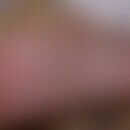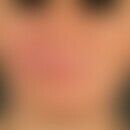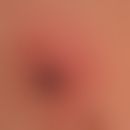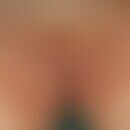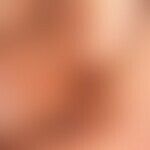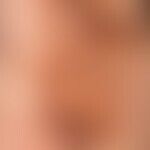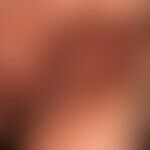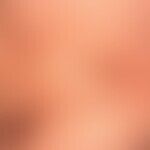Synonym(s)
HistoryThis section has been translated automatically.
Pock, 2001
DefinitionThis section has been translated automatically.
Rare brownish coloured variant of the classic Lichen planus, often located in the large articular flexures, in which the characteristic red-violet colour of the Lichen planus is supplemented or completely replaced by a brown colour component.
You might also be interested in
Occurrence/EpidemiologyThis section has been translated automatically.
Has been described preferentially in Caucasians and Asians.
Worldwide, about 50 cases have been described so far (note: such numbers, however, say little about the actual prevalence of lichen planus pigmentosus inversus).
ManifestationThis section has been translated automatically.
Affected are adults between 40 and 60 years of age. In children this clinical picture has not been described. w>m=2:1
LocalizationThis section has been translated automatically.
Lichen planus pigmentosus occurs mainly in the intertriginous areas, such as axillary, popliteal, submammary, inguinal, vulvar and penile areas.
ClinicThis section has been translated automatically.
Well-demarcated, disseminated, 0.2-0.5 cm, only slightly pruritic, purplish-brown or homogeneous brown patches are found. These may confluence to form extensive, irregularly configured, patches (see Fig.). The lesions tend to be chronic, lasting months or years.
HistologyThis section has been translated automatically.
The histology of this lichen planus variant shows the characteristic phenomena of lichen planus, with lichenoidal infiltrates in band form, mostly only minor orthohyperkeratosis (intertrigines) and a conspicuous pigment incontinence.
Differential diagnosisThis section has been translated automatically.
LiteratureThis section has been translated automatically.
- Chen S et al (2015) Lichen planus pigmentosus-inversus: report of three Chinese cases and review of the published work. J Dermatol 42: 77-80
- Ghorbel HH et al (2014) Lichen planus pigmentosus inversus. Indian J Dermatol Venereol Leprol 80:580
- Murzaku EC et al (2014) Axillary lichen planus pigmentosus-inversus: dermoscopic clues of a rare entity. Diagnosis: lichen planus pigmentosus (LPP). J Am Acad Dermatol 71:e119-20
- Pock L et al (2001) Lichen planus pigmentosus inversus. J Eur Acad Dermatol Venereol 15: 452-454
- Schmid C et al (2018) Slate grey patches in both armpits. Dermatologist 69: 177-179
- Sindhura KB (2015) Lichen planus pigmentosus: a retrospective clinico-epidemiological study with emphasis on the rare follicular variant. J Eur Acad Dermatol Venereol doi: 10.1111/jdv.1345
Incoming links (1)
Erythema dyschromicum perstans;Outgoing links (7)
Acanthosis nigricans (overview); Candidosis intertriginous; Erythema dyschromicum perstans; Erythrasma; Fixed drug eruption; Lichen planus classic type; Lichen planus (overview);Disclaimer
Please ask your physician for a reliable diagnosis. This website is only meant as a reference.
